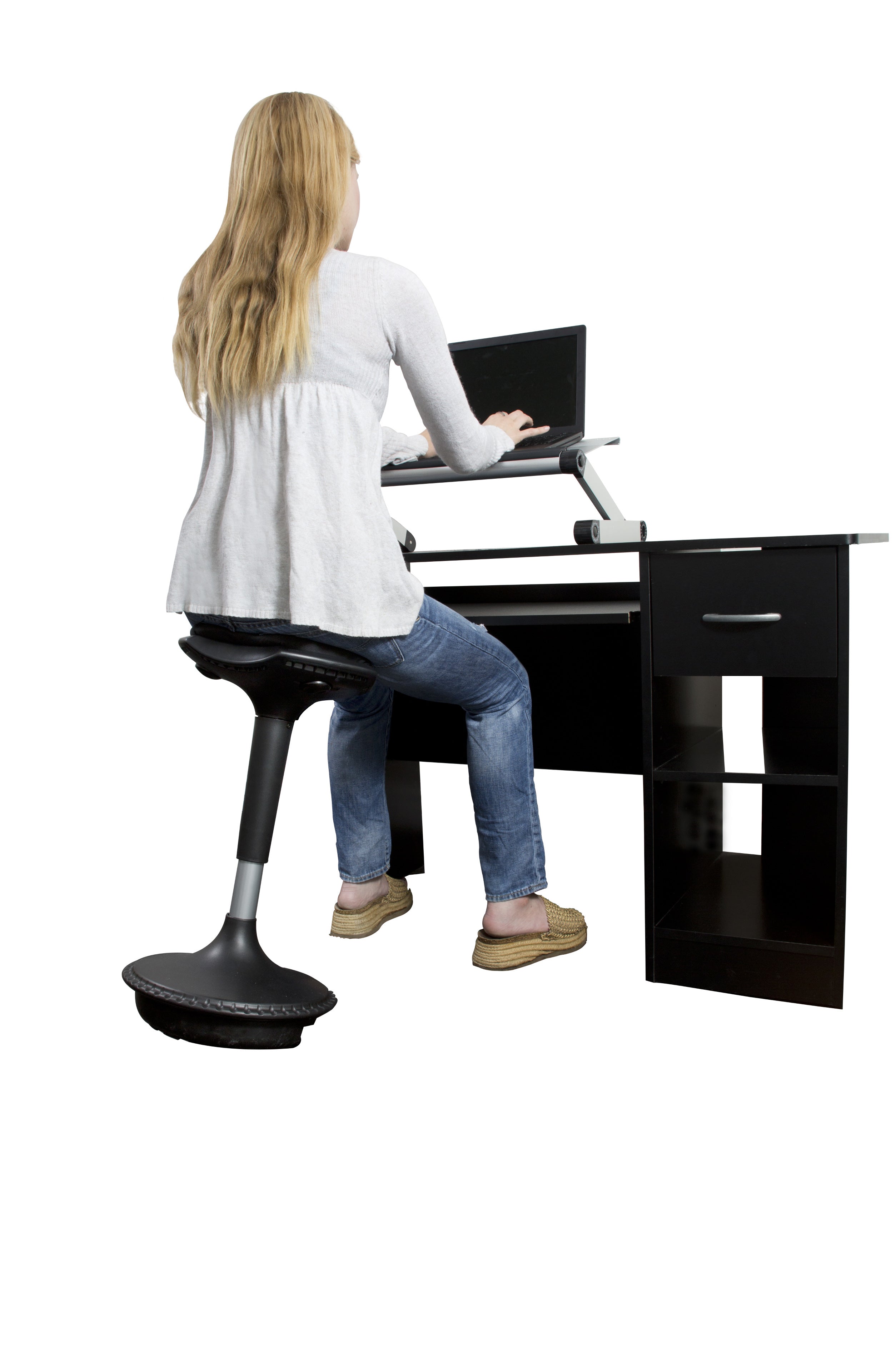
If you’re like most people, a bit of nagging aches and pains can make you grumpy and less productive at work; after all, you’re not at your most productive when you’re physically uncomfortable. Take a moment to consider the aches and pains you may regularly experience. How many of them are related to how your desk is set up? If you don’t have an ergonomic workstation, your posture may suffer, and your risk of injury may increase—and that’s sure to raise your stress level!
Imagine how your productivity would be affected if you were always fatigued, in pain, or otherwise uncomfortable during the workday. Now multiply that to your whole team. When no one is at their best, everyone’s stress increases, while overall productivity plummets. Keeping workplace ergonomics in mind—like controlling screen glare, reducing motion, improving posture, and positioning equipment at ideal heights and reaches—can help increase efficiency and employee engagement.
One aim of ergonomics is to help reduce accidents and injuries. That’s why you see construction and factory workers wearing personal protective equipment (PPE) like hard hats, safety glasses, and back belts. Ergonomic tools for these workers are designed to reduce or prevent repetitive stress injuries, awkward gripping positions, excessive bending or stooping, exposure to excessive vibration, and more.
Ergonomic PPE protects workers from injuries and also helps make their jobs easier. For example, an ergonomic glove should fit perfectly, protect the hand, and enhance the wearer’s grip. When ergonomic equipment doesn’t fit right, it can be as dangerous as not using any protective equipment at all.
Instead of straight-backed office chairs and carpal tunnel-inducing office desks, an increasing number of workplaces are adding ergonomic office furniture to not only modernize their décor, but also to improve workplace ergonomics.
Office Solutions
Computer Monitor Stands
 When your computer monitor is positioned improperly, you can end up with neck and shoulder pain from craning your neck or turning your head to see the monitor while you’re working. Computer monitor stands can help you position your monitor directly in front of you, with the center of the screen at about eye height. You can also use computer monitor stands to raise the monitor to a height appropriate for standing desks.
When your computer monitor is positioned improperly, you can end up with neck and shoulder pain from craning your neck or turning your head to see the monitor while you’re working. Computer monitor stands can help you position your monitor directly in front of you, with the center of the screen at about eye height. You can also use computer monitor stands to raise the monitor to a height appropriate for standing desks.
Standing Desks
By now, it’s probably fairly common knowledge that sitting all day while you work isn’t healthy. One way you can increase movement is by using a standing desk while you work. Standing desks have a surface that’s higher than an ordinary desk, because they’re designed to be used while you’re standing up, of course. Many standing desks have multiple height options that can work for people who are short or tall. Some adjustable height computer work stations even have electric motors that can adjust the height up and down so they work for anyone.
Standing Desk Conversions
 For those who can’t buy an entire new desk, another option to create an adjustable height computer work station is a standing desk conversion. These consist of a platform that serves as a computer monitor stand and typically also hold the keyboard. They sit on top of an existing work surface and can be adjusted so the height is appropriate for sitting or standing.
For those who can’t buy an entire new desk, another option to create an adjustable height computer work station is a standing desk conversion. These consist of a platform that serves as a computer monitor stand and typically also hold the keyboard. They sit on top of an existing work surface and can be adjusted so the height is appropriate for sitting or standing.
Active Seating
Active seating refers to stools or chairs that let you move around while you’re sitting. This can include wobbly stools, balance balls, and a variety of other seating options that help you work your core muscles while you’re sitting. Active seating can help improve posture and boost your energy levels during the day by preventing slouching.
Conclusion
Improving workplace ergonomics can also lower stress by reducing sick days, injuries, and long-term health problems that can negatively affect a person’s career. After all, if your team isn’t distracted by physical discomfort, they can better focus on doing their jobs. And that benefits everyone’s bottom line.

